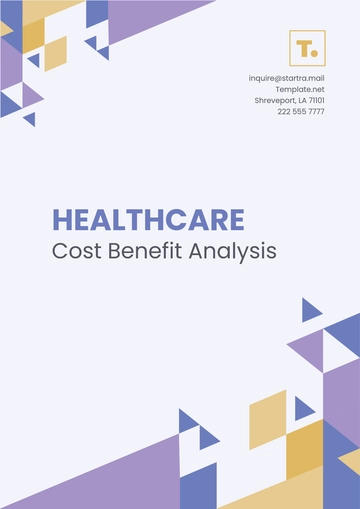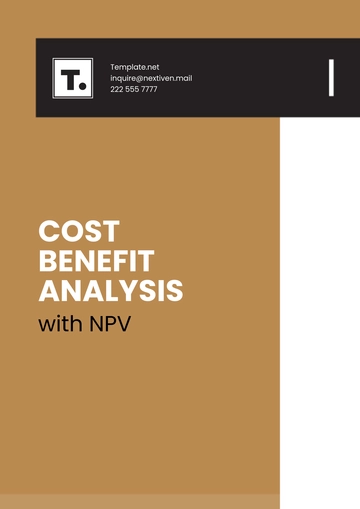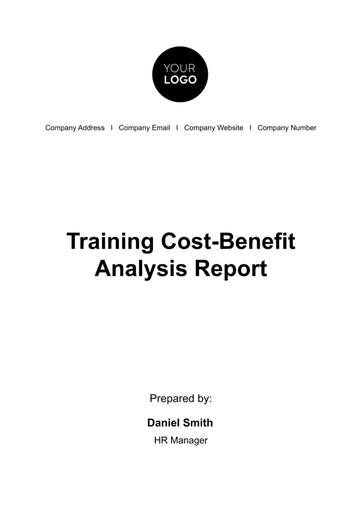Free Car Rental Maintenance Cost Analysis

I. Overview
A. Introduction
In the highly competitive car rental industry, managing operational costs effectively is crucial for maintaining profitability. One of the most significant operational costs for car rental companies like [Your Company Name] is vehicle maintenance. Maintenance costs can vary widely based on factors such as vehicle type, age, mileage, and usage patterns. Conducting a thorough maintenance cost analysis helps identify cost-saving opportunities, enhance vehicle performance, and ensure customer satisfaction by providing well-maintained vehicles.
B. Objective
The primary objective of this Car Rental Maintenance Cost Analysis is to comprehensively understand the maintenance expenses associated with our rental fleet. By analyzing these costs, [Your Company Name] aims to:
Optimize maintenance schedules and procedures.
Identify areas for cost reduction.
Improve vehicle reliability and customer satisfaction.
Enhance overall fleet management and financial performance.
II. Fleet Inventory
A. Vehicle List
A detailed inventory of our rental fleet is essential for understanding the scope of our maintenance operations. Below is a table that provides a snapshot of our current fleet, categorized by vehicle type, make, model, year, and mileage.
Vehicle Type | Make | Model | Year | Mileage (in miles) |
|---|---|---|---|---|
Economy | 45,000 | |||
Economy | 37,000 | |||
Luxury | 52,000 | |||
Luxury | 48,000 | |||
SUV | 42,000 | |||
SUV | 50,000 | |||
Truck | 55,000 | |||
Truck | 39,000 |
B. Vehicle Categorization
Categorizing vehicles by type helps in tailoring maintenance strategies specific to the needs and characteristics of each category. For instance, economy cars typically require less expensive maintenance compared to luxury cars, while SUVs and trucks might need more frequent and intensive services due to their heavier usage and rugged performance requirements.
III. Maintenance Cost Components
A. Routine Maintenance
Routine maintenance encompasses regular services that keep vehicles running efficiently and safely. These services include oil changes, tire rotations, brake inspections, and general inspections. The costs associated with routine maintenance can vary depending on the vehicle type and usage patterns. For example, luxury cars often require more expensive synthetic oils and premium parts, increasing the overall maintenance costs.
B. Repairs
Repairs refer to the costs incurred to fix issues that arise unexpectedly. These can range from minor fixes like replacing a broken headlight to major repairs such as engine or transmission overhauls. The frequency and severity of repairs can significantly impact the total maintenance budget. It's important to monitor repair costs closely to identify any recurring issues that might indicate a need for preventive measures or fleet adjustments.
C. Parts and Labor
Breaking down maintenance costs into parts and labor provides a clearer picture of where money is being spent. Labor costs can vary based on the complexity of the service and the expertise required, while parts costs depend on the availability and price of the necessary components. The table below illustrates a typical breakdown of parts and labor costs for common maintenance activities:
Maintenance Activity | Parts Cost ($) | Labor Cost ($) | Total Cost ($) |
|---|---|---|---|
Oil Change | 30 | 40 | 70 |
Tire Rotation | 0 | 25 | 25 |
Brake Inspection | 20 | 30 | 50 |
Engine Repair | 500 | 700 | 1200 |
Transmission Repair | 600 | 800 | 1400 |
D. Seasonal Maintenance
Seasonal maintenance involves services that are specific to certain times of the year. For example, winterizing vehicles in colder climates can include adding antifreeze, checking tire treads, and ensuring the heating system is functioning properly. These seasonal adjustments help prevent breakdowns and ensure the safety and reliability of the fleet throughout the year.
E. Miscellaneous Costs
Miscellaneous costs cover a range of additional expenses that may not fit neatly into the categories above. This can include costs for towing, roadside assistance, emergency repairs, and unexpected expenditures that arise due to accidents or other unforeseen events. While these costs can be unpredictable, having a contingency budget helps manage them without disrupting overall financial planning.
IV. Cost Analysis by Vehicle Type
A. Economy Cars
Economy cars are generally more cost-effective to maintain due to their simpler mechanical systems and lower parts costs. However, it's important to consider the cumulative costs over time as even minor, frequent maintenance can add up.
Routine Maintenance: Typically lower for economy cars, with oil changes and tire rotations being the most common expenses.
Repairs: Less frequent but can become more common as the vehicle ages.
B. Luxury Cars
Luxury cars come with higher maintenance costs due to premium parts and specialized labor.
Routine Maintenance: More expensive due to the use of high-quality synthetic oils and premium parts.
Repairs: Can be costly, especially for major components like the engine or transmission.
C. SUVs and Trucks
SUVs and trucks require robust maintenance due to their heavy-duty performance.
Routine Maintenance: Includes additional checks for off-road capabilities and towing capacities.
Repairs: Often more frequent and expensive due to the vehicle's larger size and heavier usage.
D. Comparison
Comparing maintenance costs across different vehicle types helps in strategic decision-making regarding fleet composition. Economy cars offer lower costs but might not meet the demands of all customers, while luxury cars and SUVs provide higher customer satisfaction at a premium maintenance cost. The table below summarizes the average annual maintenance costs for different vehicle types:
Vehicle Type | Average Annual Maintenance Cost ($) |
|---|---|
Economy | 500 - 700 |
Luxury | 1200 - 1500 |
SUV | 800 - 1200 |
Truck | 900 - 1300 |
V. Maintenance Schedule and Frequency
A. Routine Maintenance Schedule
Developing a comprehensive maintenance schedule is essential for keeping the fleet in optimal condition. The schedule should be based on manufacturer recommendations, vehicle usage patterns, and historical maintenance data. Below is a sample maintenance schedule for an economy car:
Maintenance Activity | Frequency |
|---|---|
Oil Change | Every 5,000 miles |
Tire Rotation | Every 7,500 miles |
Brake Inspection | Every 10,000 miles |
Engine Check | Annually or every 15,000 miles |
Transmission Check | Every 30,000 miles |
B. Frequency of Repairs
The frequency of repairs is influenced by factors such as vehicle age, mileage, and usage conditions. Regularly tracking and analyzing repair frequency helps in identifying patterns and potential issues before they become major problems. For instance, a high frequency of brake repairs might indicate a need for better driving practices or higher-quality brake components.
C. Impact of Mileage
Mileage has a direct impact on maintenance needs. Higher mileage vehicles tend to require more frequent and intensive maintenance. Understanding this relationship helps in planning for maintenance costs and scheduling services to minimize downtime. The table below illustrates the impact of mileage on maintenance frequency for a typical SUV:
Mileage Range | Maintenance Frequency |
|---|---|
0 - 20,000 | Low |
20,001 - 50,000 | Moderate |
50,001 - 100,000 | High |
100,001+ | Very High |
VI. Cost Trends and Patterns
A. Historical Data
Analyzing historical data is crucial for understanding how maintenance costs have evolved over time. By examining past expenses, [Your Company Name] can identify trends and patterns that may influence future costs. The following table shows the maintenance costs for our fleet over the past five years:
Year | Total Maintenance Cost ($) | Average Cost per Vehicle ($) |
|---|---|---|
[20xx] | 150,000 | 1,500 |
[20xx] | 160,000 | 1,600 |
[20xx] | 170,000 | 1,700 |
[20xx] | 180,000 | 1,800 |
[20xx] | 190,000 | 1,900 |
From this data, we can observe a consistent increase in maintenance costs. This upward trend may be due to factors such as aging vehicles, inflation in parts and labor costs, and increased vehicle usage. Understanding these trends helps in forecasting future expenses and budgeting accordingly.
B. Seasonal Trends
Seasonal trends also play a significant role in maintenance costs. For instance, winter months may see higher maintenance expenses due to the need for winterizing vehicles, while summer months might require more frequent air conditioning servicing. The table below illustrates typical seasonal maintenance costs for our fleet:
Season | Typical Maintenance Activities | Average Cost per Vehicle ($) |
|---|---|---|
Winter | Antifreeze, tire checks, heating | 200 |
Spring | General inspections, tire rotation | 150 |
Summer | Air conditioning, fluid checks | 180 |
Fall | Brake inspection, battery check | 170 |
By identifying these seasonal trends, [Your Company Name] can better prepare for peak maintenance periods and allocate resources more effectively.
C. Predictive Analysis
Predictive analysis involves using historical and seasonal data to forecast future maintenance costs. This approach helps in proactive budgeting and planning. For instance, if the historical data indicates a 5% annual increase in maintenance costs, [Your Company Name] can anticipate higher expenses and adjust budgets accordingly. Predictive analysis tools and software can further enhance accuracy by incorporating variables such as vehicle age, mileage, and usage patterns.
VII. Cost Optimization Strategies
A. Preventive Maintenance
Preventive maintenance is a proactive approach to vehicle upkeep that aims to prevent major repairs and extend vehicle life. Regularly scheduled services such as oil changes, tire rotations, and inspections can identify potential issues before they become costly problems. Implementing a robust preventive maintenance program can significantly reduce unexpected breakdowns and associated costs.
For example, [Your Company Name] can adopt a preventive maintenance schedule that includes monthly inspections for high-mileage vehicles and quarterly inspections for newer vehicles. This strategy ensures that all vehicles are maintained consistently and any issues are addressed promptly.
B. Vendor Management
Effective vendor management is essential for controlling maintenance costs. By establishing strong relationships with reliable parts and service providers, [Your Company Name] can negotiate better prices and ensure timely service. Evaluating vendors based on criteria such as pricing, quality of service, and reliability helps in selecting the best partners for our maintenance needs.
For instance, creating a preferred vendor list with negotiated discounts can lead to significant savings. Regularly reviewing vendor performance and seeking competitive bids for major repairs and parts purchases can further optimize costs.
C. Technological Integration
Integrating technology into fleet management can enhance maintenance efficiency and cost control. Fleet management software provides real-time data on vehicle health, maintenance schedules, and repair history. This data-driven approach allows [Your Company Name] to make informed decisions about maintenance needs and costs.
For example, using telematics systems to monitor vehicle performance can alert us to potential issues such as engine problems or tire pressure drops. Addressing these issues promptly can prevent more extensive and costly repairs.
D. Employee Training
Well-trained employees play a crucial role in maintaining the fleet. Providing training on vehicle maintenance basics, recognizing early signs of wear and tear, and following proper driving practices can reduce the frequency and severity of repairs. Regular training sessions for drivers and maintenance staff ensure that everyone is equipped with the knowledge and skills to keep the fleet in top condition.
For example, training drivers to perform daily vehicle inspections and report any issues can help catch problems early. Maintenance staff should be trained on the latest diagnostic tools and techniques to efficiently address any repairs needed.
VIII. Financial Impact
A. Cost-Benefit Analysis
Conducting a cost-benefit analysis helps in understanding the financial impact of maintenance costs on the overall profitability of [Your Company Name]. By comparing the costs of regular maintenance with the potential expenses of major repairs and vehicle downtime, we can determine the most cost-effective approach to fleet management.
For instance, investing in preventive maintenance might have higher upfront costs but can save money in the long run by reducing the frequency and severity of repairs. The following table illustrates a simple cost-benefit analysis for preventive maintenance versus reactive repairs:
Maintenance Approach | Annual Cost ($) | Benefits (Cost Savings, $) | Net Impact ($) |
|---|---|---|---|
Preventive | 50,000 | 70,000 | +20,000 |
Reactive | 80,000 | 30,000 | -50,000 |
B. ROI Calculation
Calculating the return on investment (ROI) for maintenance expenditures provides insights into the financial efficiency of our maintenance strategies. ROI is calculated by dividing the net benefits (cost savings) by the total maintenance costs. A higher ROI indicates more efficient use of maintenance resources.
C. Budgeting
Developing a detailed maintenance budget based on the cost analysis findings helps in effective financial planning. The budget should account for routine maintenance, repairs, parts, labor, seasonal adjustments, and miscellaneous costs. Allocating funds based on historical data and predictive analysis ensures that [Your Company Name] is well-prepared for maintenance expenses throughout the year.
Budget Item | Annual Allocation ($) |
|---|---|
Routine Maintenance | 60,000 |
Repairs | 40,000 |
Parts | 30,000 |
Labor | 50,000 |
Seasonal Maintenance | 20,000 |
Miscellaneous Costs | 10,000 |
Total | 210,000 |
IX. Recommendations
A. Actionable Insights
Based on the analysis, several actionable insights can be drawn to optimize maintenance costs and improve fleet performance at [Your Company Name]:
Implement a Comprehensive Preventive Maintenance Program: Regularly scheduled maintenance can prevent major repairs and extend vehicle life.
Optimize Vendor Relationships: Establishing partnerships with reliable vendors and negotiating better prices can reduce parts and labor costs.
Leverage Technology: Integrating fleet management software and telematics systems provides real-time data for proactive maintenance decisions.
Enhance Employee Training: Training drivers and maintenance staff on best practices can reduce repair frequency and improve vehicle performance.
B. Policy Implementation
To support these recommendations, [Your Company Name] will develop and implement policies that reinforce maintenance best practices. This includes creating a preventive maintenance schedule, setting guidelines for vendor selection, and establishing protocols for using fleet management technology. Clear policies ensure consistency and accountability across the organization.
For example, a policy might stipulate that all vehicles undergo a comprehensive inspection every three months, with specific maintenance tasks assigned based on mileage and vehicle type.
C. Future Monitoring
Ongoing monitoring and analysis of maintenance costs are essential for continuous improvement. Regularly reviewing maintenance data, updating schedules, and adjusting budgets based on real-time insights ensures that [Your Company Name] remains responsive to changing conditions and maintains optimal fleet performance.
Establishing key performance indicators (KPIs) such as maintenance cost per vehicle, repair frequency, and downtime can help track progress and identify areas for further improvement.
X. Conclusion
A. Summary of Findings
The Car Rental Maintenance Cost Analysis for [Your Company Name] has highlighted several key findings:
Maintenance costs have been steadily increasing over the past five years, driven by factors such as aging vehicles and rising parts and labor costs.
Seasonal trends significantly impact maintenance expenses, with higher costs observed during winter and summer months.
Predictive analysis and preventive maintenance strategies offer substantial cost-saving opportunities.
Effective vendor management and technological integration can further optimize maintenance operations and reduce costs.
B. Final Thoughts
A proactive approach to maintenance cost management is crucial for the long-term success and profitability of [Your Company Name]. By implementing the recommendations outlined in this analysis, the company can enhance fleet performance, improve customer satisfaction, and achieve significant cost savings. Continuous monitoring and adaptation to changing conditions will ensure that [Your Company Name] remains a leader in the car rental industry.
- 100% Customizable, free editor
- Access 1 Million+ Templates, photo’s & graphics
- Download or share as a template
- Click and replace photos, graphics, text, backgrounds
- Resize, crop, AI write & more
- Access advanced editor
Optimize maintenance costs with Template.net's customizable and editable Car Rental Maintenance Cost Analysis Template. Use the AI Editor Tool to conduct detailed cost analyses. This user-friendly template ensures accurate and comprehensive cost management, improving financial efficiency and decision-making.





























